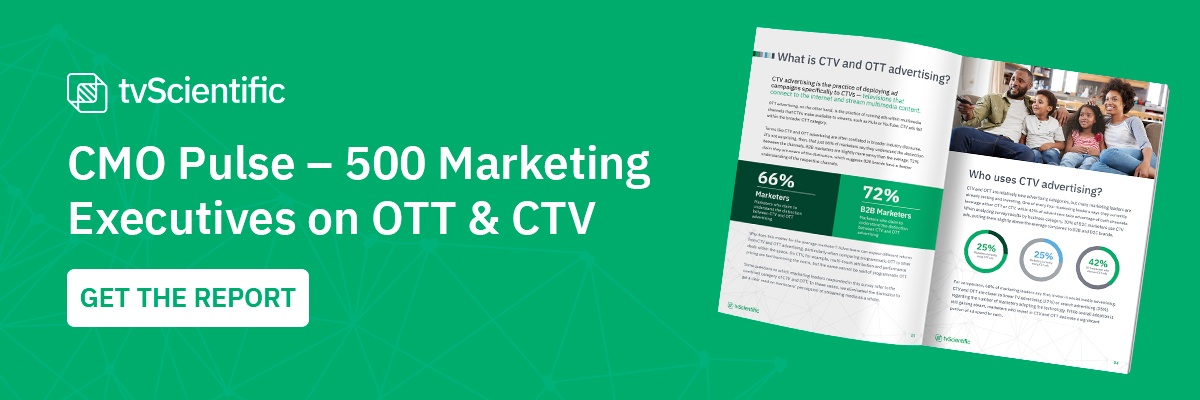Growth marketing and brand marketing can both be effective, but they have some fundamental differences to take into account
Marketing is simultaneously an ever-expanding and static field, placing as much emphasis on existing concepts as it does on novel ones. The rise of the internet has fueled a data surge that allows these new forms of marketing to be particularly potent, while traditional forms of marketing maintain a tried-and-true appeal. These methods working together has created a landscape that allows marketers to reach incredibly specific demographics without forsaking what’s always performed well. In recent years, growth marketing has emerged as technology forward way to capture new business, though many marketers still struggle with balancing growth and brand marketing or confuse the two entirely.
Both brand and growth marketing have their place, but there are critical differences between them. Here’s how to differentiate growth marketing vs brand marketing, their respective advantages, and why digital marketers put growth first.
Dig deeper with "What Is Growth Marketing? A Complete Guide."
What Is Growth Marketing?
Growth marketing is a strategy using relationship-building tactics to foster consumer loyalty and grow a larger customer base. It emphasizes attracting new customers through ever-evolving direct acquisition strategies and custom-tailors marketing material to individual tastes, evolving as consumer interests do. Growth marketing is fundamentally about experimentation.
When designing a strategy, growth marketers are focusing on growing their customer base incrementally, typically using performance pricing to determine ad spend. That’s not to say that costs aren’t an important metric — all marketing campaigns have budgets — but the growth marketing ethos accepts that fast growth requires bold strategies. More importantly, growth marketers are competent in multiple channels, like email and content marketing, and have a functional understanding of numerous other fields.
This gives growth marketers a deeper pool of marketing techniques to experiment with, which is paramount for maximum flexibility. This knowledge-backed experimentation is also data-driven, taking into account factors like consumer behavior for an optimized strategy.
What Is Brand Marketing?
Brand marketing is a strategy that develops a voice for your product or company and creates a consistent image, then uses the weight of that image for maximum effect. When marketers try to move the needle through brand marketing, raw exposure becomes one of the primary drivers.
Some estimates put McDonald’s’ worldwide hamburger sales at upwards of 50 million per day. In the 90s, a survey performed by the International Olympic Committee found that Ronald McDonald was more recognizable than the Christian cross. McDonald’s reached that level of acclaim through air-tight brand marketing and delivering a consistent product and experience to consumers. Companies like McDonald’s can afford to invest large amounts of money into brand marketing without any guarantee that they’ll see a return.
Conversely, growth marketing is about maximizing the number of consumers in a target demographic that view ads.
Growth Marketing vs Brand Marketing
Here’s the problem for marketers in the current climate: Brand marketing is most effective for the 800-pound gorillas in the room, the well-established goliaths that can afford to air ads to audiences of millions. Apple is the most recognizable brand in the world and doesn’t have to make a special effort to directly appeal to individuals because of it. It has sold billions of iPhones simply thanks to the “sophisticated” image it has built for itself. And so long as it keeps its brand marketing consistent, it will sell billions more. Apple got here through growth marketing, running campaigns like “There’s No Step 3” to attract a broader audience, and now it can afford to spend money virtually indiscriminately. Ultimately, this is the goal for all companies.
Odds are that you aren’t trying to sell iPhones, and you probably don’t have the marketing budget that Apple has, either. For you, growth marketing isn’t just about finding channels that work, but determining how to maximize their benefits for the least amount of investment. This will likely take a fair amount of experimentation, data analysis, and agility, so you can iterate quickly and lean into what works without wasting too much ad spend.
Growth Marketing Is Fueling the Direct-to-Consumer Boom
Direct-to-consumer companies are becoming increasingly lucrative. By skipping the middleman, companies like Dollar Shave Club, which helped pioneer growth marketing to maximize the D2C model, are able to cut costs and avoid battling for shelf space in retail locations. Email marketing, referrals, and fill-in-the-blank advertisements on podcasts have become commonplace on the internet, each one affording a different channel of growth marketing. These methods are more cost-effective than traditional broadcast brand marketing, making it an optimal way to attract customers
Beyond just enticing new customers, growth marketing also emphasizes upselling. Grove Co., a sustainable D2C company that sells household products, engages its consumers by unlocking “free” gifts at certain spending milestones. For instance, if a customer spends $30 on laundry detergent, they may receive a free hand soap as a gift, as well as being informed that if they spend another $10, they’ll receive a free multi-surface cleaner. It’s a twist on the pricing ladder, but one that encourages customers to come back for more free gifts in the future, and likely spend money on products that they enjoyed but previously received for free. This sort of growth marketing creates customers with a higher lifetime value, so you’ll be spending less money on UA and earning more on the customers you find.
Big Companies Benefit From Growth Marketing, Too
Large companies have taken notice of growth marketing vs brand marketing and are joining in on the D2C boom. Nike is one clear example of a giant corporation embracing D2C and growth marketing. Since its inception, Nike’s D2C arm has consistently smashed its goals, using consumer-centric ads to create agile campaigns that cut out the retail middle man. And Nike isn’t alone: Apple has made financing iPhones directly from its website easier with the Apple Card, Xbox has introduced Game Pass as an inexpensive way to turn its first-party software into a new form of consumer SaaS platform, and Levi’s is shifting to a D2C model. Just because a brand is a household name, that doesn’t mean they can afford to ignore user acquisition. Even giants like Nike and Levi’s are just one hot competitor away from losing valuable market share, so leveraging growth marketing via D2C channels is a smart play.
Brand marketing is still a lucrative avenue for these companies, and it absolutely has its place when reaching consumers. We find comfort in the consistent messaging of brands that we’re familiar with, and there’s no need to reinvent the wheel for marketing that works. It’s best suited for the tried and true, reinforcing what consumers already know about your company through awareness marketing. To make the most of your never-big-enough marketing budget, you need to know how and when to put your material in front of potential customers at a low cost, a one-two punch that can take your company to the next level.
tvScientific recognizes this and is designed to help growth marketing campaigns find the right audience through CTV devices, where users are more likely to engage with your product, at a significantly lower cost than traditional brand marketing channels are subject to. Our platform intelligently tracks referrals, so you can be confident that your campaigns are having the desired effects, whether that’s CTA click-throughs, sales, or email sign-ups. If you want to learn more about what tvScientific can do for you, book a demo today.








